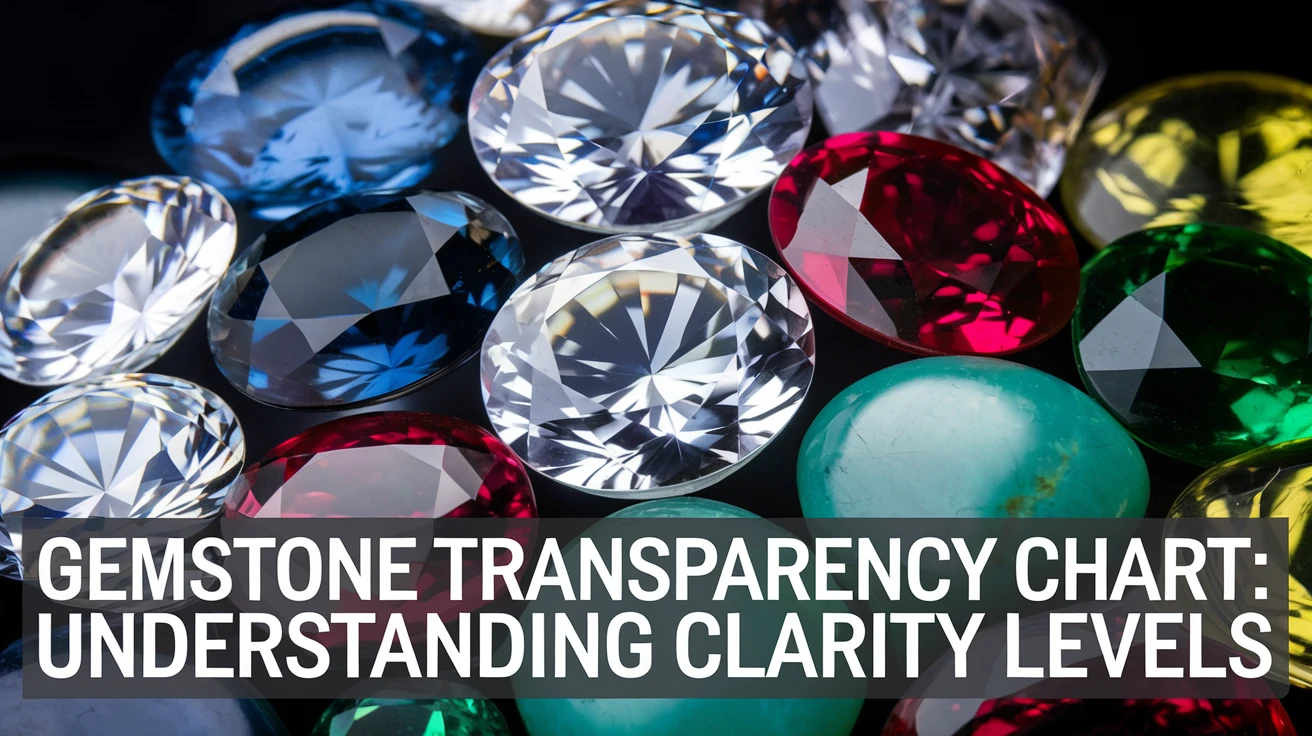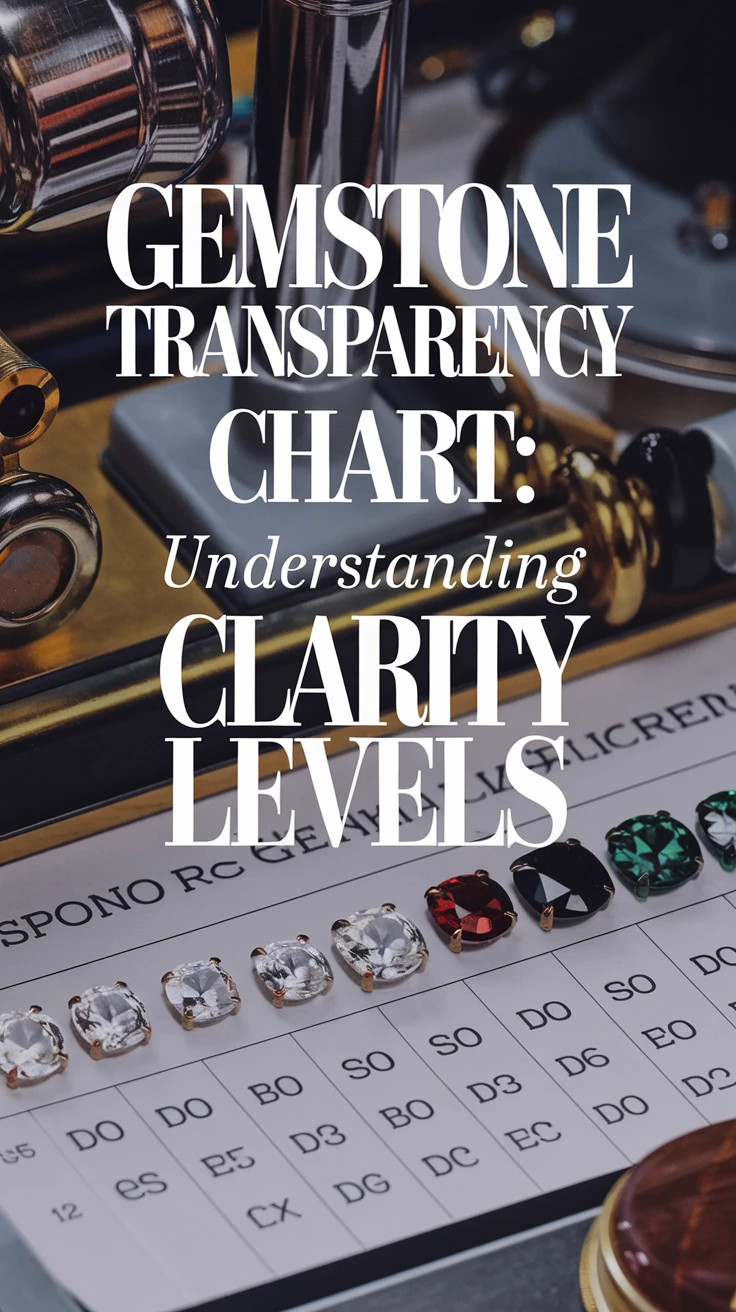
When venturing into the world of gemstones, understanding transparency is crucial for both collectors and buyers. As someone who’s spent years studying and working with precious stones, I’ve learned that transparency is one of the most significant factors affecting a gemstone’s beauty and value. This comprehensive guide will walk you through everything you need to know about gemstone transparency, from basic concepts to professional grading methods, helping you make informed decisions in your gemstone journey.
The Basics of Gemstone Transparency
Transparency refers to a gemstone’s ability to transmit light. As a fundamental characteristic, it plays a crucial role in determining not only the stone’s appearance but also its value. From my experience working with various gems, I’ve observed that transparency exists on a spectrum, ranging from completely transparent to opaque.
Main Transparency Categories
| Category | Description | Example Gems |
|---|---|---|
| Transparent | Light passes through freely | Diamond, Sapphire |
| Translucent | Light passes partially | Moonstone, Jade |
| Opaque | No light passes through | Turquoise, Lapis Lazuli |
Understanding Transparency Classifications
Having examined thousands of gemstones, I’ve learned that transparency classification is more nuanced than many realize. Professional gemologists use specific terms to describe various levels of transparency.
Detailed Transparency Scale
- Crystal Clear (Flawless transparency)
- Transparent (Slight inclusions)
- Semi-transparent (Visible inclusions)
- Translucent (Diffused light transmission)
- Semi-translucent (Limited light transmission)
- Opaque (No light transmission)
I remember my first experience with a seemingly transparent sapphire that turned out to be only semi-transparent under proper lighting. This taught me the importance of examining stones under different lighting conditions.
What Affects Gemstone Transparency?
Through years of observation and study, I’ve identified several key factors that influence a gemstone’s transparency:
Internal Factors
| Factor | Impact | Common in |
|---|---|---|
| Crystal Structure | Fundamental transparency level | All gemstones |
| Inclusions | Creates clouding or blocking | Emeralds, Rubies |
| Chemical Composition | Affects light transmission | All varieties |
External Factors
- Cutting quality and style
- Surface polish
- Treatment methods
- Environmental damage
Professional Grading Methods
After working alongside professional gemologists, I’ve learned their systematic approach to grading transparency. Here’s what the experts look for:
Grading Tools and Techniques
- Specialized light sources
- Magnification equipment
- Standardized grading charts
- Digital imaging systems
One particularly memorable experience was when I first used a professional light source to grade a “crystal clear” aquamarine, only to discover subtle inclusions that affected its transparency rating.
Common Gemstones and Their Transparency Levels
Based on extensive handling of various gemstones, I’ve compiled this comprehensive overview:
Typical Transparency by Gemstone Type
| Gemstone | Typical Transparency | Value Impact |
|---|---|---|
| Diamond | Transparent | High |
| Ruby | Transparent to Semi-transparent | Moderate |
| Emerald | Semi-transparent | Moderate |
| Opal | Translucent | Varies |
Making Smart Choices Based on Transparency
Drawing from my experience helping collectors and buyers, here are essential tips for using transparency knowledge in gemstone selection:
Practical Selection Guidelines
- Always examine stones under different lighting conditions
- Consider the intended use (jewelry vs. collection)
- Understand typical transparency levels for specific varieties
- Factor in your budget constraints
- Consider personal preferences
Conclusion
Understanding gemstone transparency is essential for anyone interested in precious stones. Whether you’re a collector, buyer, or enthusiast, this knowledge will help you make informed decisions and appreciate the unique characteristics of each stone. Remember that while transparency is important, it’s just one of many factors that contribute to a gemstone’s overall beauty and value.
Key Takeaways
- Transparency exists on a spectrum from completely transparent to opaque
- Multiple factors affect a gemstone’s transparency, including internal structure and external conditions
- Professional grading methods provide standardized ways to evaluate transparency
- Different gemstone varieties have naturally different transparency levels
- Understanding transparency helps make informed purchasing decisions
Frequently Asked Questions
What is the difference between transparency and clarity?
While related, transparency refers to how much light passes through a stone, while clarity specifically refers to the presence or absence of inclusions and blemishes.
Can a gemstone’s transparency be improved?
While some treatments can enhance apparent transparency, natural transparency is largely fixed. Professional cutting and polishing can optimize light transmission.
Does higher transparency always mean better value?
Not necessarily. Some gems, like jade or opal, are naturally translucent or opaque and are valued for other qualities.
How do I test a gemstone’s transparency?
Hold the stone over printed text under good lighting. The clarity of visible text indicates the transparency level.
Why do some gems appear more transparent in certain lighting?
Different light sources and angles can affect how light travels through the stone, changing its apparent transparency.
Should I avoid buying translucent gemstones?
No, translucent stones can be beautiful and valuable. Choose based on your preferences and the stone’s intended use.
How does cutting affect transparency?
Proper cutting can maximize a stone’s natural transparency by optimizing light paths through the material.
Are lab-created gems more transparent than natural ones?
Often yes, as lab-created stones typically have fewer inclusions and more controlled growth conditions.
What causes a gemstone to be opaque?
Opacity results from internal structure, chemical composition, or numerous inclusions that prevent light transmission.
How important is transparency in determining a gemstone’s value?
Importance varies by gem type. For traditionally transparent stones like diamonds, it’s crucial; for others like turquoise, it’s less significant.

